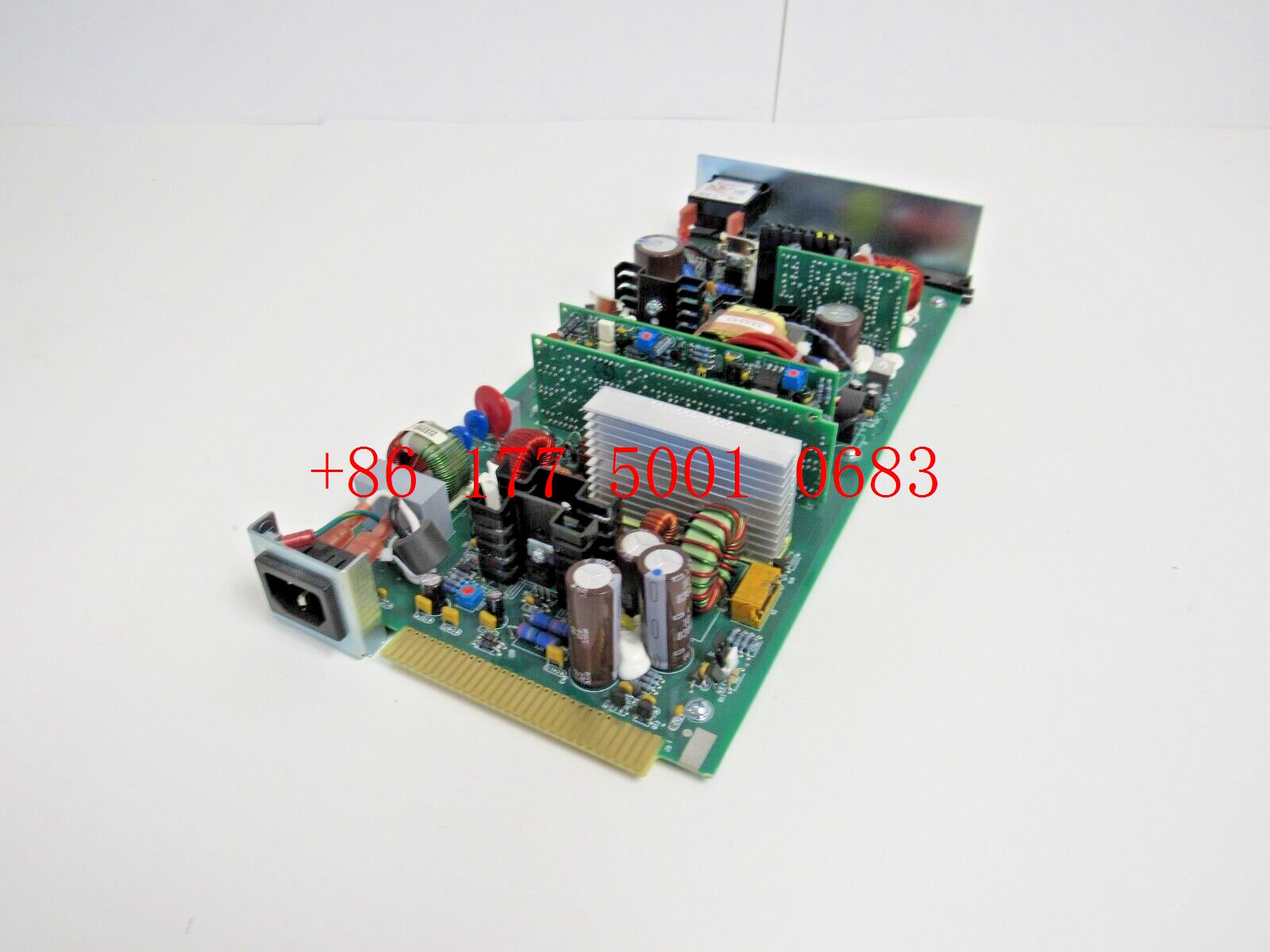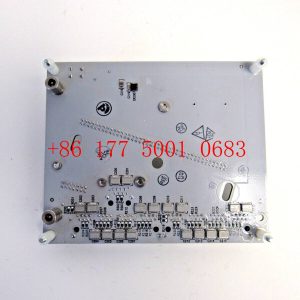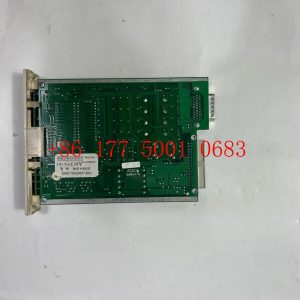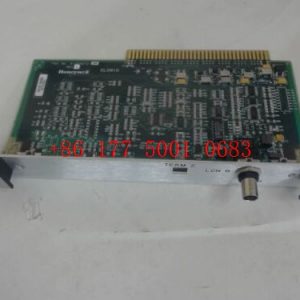Description
hardware flow control. It is an ideal choice in the field of industrial automation.
Implementation of communication between ABC industrial robot and PLC based on DeviceNet fieldbus technology
introduction
In modern production systems, industrial robots and PLCs need to communicate and collaborate to complete production tasks. That is, the
industrial robots output signals to the PLC, allowing the PLC to control related equipment to drive the robot”s front-end tools. This article
mainly analyzes the communication problems between ABB industrial robots and PLC based on DeviceNet fieldbus technology.
DeviceNet is a common network communication method in the field of automation. ABB industrial robots establish a network to communicate with
Siemens PLC based on the DeviceNet network.
1Configure DSQC652
There are mainly 5 types of standard I/0 boards commonly used in ABB industrial robots [2]. Except for the different addresses assigned to
them during setup, their configuration methods are basically the same. This article mainly analyzes the ABB standard I/0 board DS0C652, which
mainly builds communication modules based on the DeviceNet network. The DS0C652 board has a distributed I/O module with 16 digital input and 16
digital output interfaces. The board is installed in the ABB industrial robot control cabinet. First, define the specific operation steps of the DS0C652 board,
enter the teach pendant control panel, then enter the configuration menu (Figure 1), select the DeviceNetDevice menu, and add a template to enter Figure 2.
ABB standard I/0 board is hung on the DeviceNet
network, so the address of the module in the network must be set. The jumpers 6 to 12 of terminal x5 are used to determine the address of the module.
The available address range is 10 to 63. Modify the parameters in the template parameters to complete the DS0C652 board settings. Click the drop-down
menu to select the “Use value from template” row, select
“DS0C65224VDCI/0Device”, and then the parameters that need to be set include the address of the I/0 board in the bus.
Figure 1 Configuring DSQC652
2Configure signals and parameters
After completing the DS0C652 board setting, the I/0 signal setting will be performed. Setting the I/0 signal is the basis for establishing communication with
the PLC. The PLC communicates and transmits data with the ABB industrial robot through the I/0 signal and the DS0C652 board. As shown in Figure 3, in the
signal configuration interface, there are many default I/0 points after the system is established. Modification is not allowed. Click “Add” to add signals. When setting
input and output signals, their address range is 0~15. First, enter the signal menu in the configuration options to set the input and output types, and modify the corresponding parameters.
After completing the settings, the computer prompts that you need to restart the settings. If there are multiple signals that need to be defined and the waiting time
is long after restarting multiple times, you can click “Cancel” and wait for all signals to be defined before clicking the “Yes” button to restart. After the signal settings are
completed, click to select “Input and Output” in the ABB menu to check whether all signals have been set.
Figure 2 Configure DSQC652 parameters
Figure 3 Signal parameter settings
During the signal establishment process, attention should be paid to the DSoC652 port and PLC port addresses used, and the corresponding address table should be
established, as shown in Table 1. The robot interacts with the PLC through I/O signals. During the setting process, there must be no errors in the port and address number
of the PLC connected to the DSoC652. If the address is set incorrectly, the communication between the robot and the PLC will not work properly.
The entire robot teaching pendant setting process is shown in Figure 4.
https://www.xmamazon.com
https://www.xmamazon.com
https://www.plcdcs.com/
www.module-plc.com/
https://www.ymgk.com
IS215UCVGH1AC GE Mark VI UCV Controller
FB201 KEBA CPU CARD
T9432 ICS TRIPLEX Analogue Input Module
9852*3 ICS TRIPLEX
9852*3 ICS TRIPLEX
9100 ICS TRIPLEX
9852*1-9802*2 ICS TRIPLEX
2301 TRICONEX 2301 Et200s Analog Input
9802*3 ICS TRIPLEX
8440-1713 WOODWARD programmable controller module
FBM230 P0926GU FOXBORO Modbus Master (Serial and TCP/IP) Driver
MP226EW BACHMANN ELECTRONIC PROCESSOR MODULE
TU847 3BSE022462R1 ABB Redundant CI840/CI840A, Single I/O
FBM207 P0914TD FOXBORO CHANNEL ISOLATED 16 DIN VOLTAGE MONITOR
PTQ-PDPS PROSOFT PROFIBUS DP Slave Communication Module
F8628X 984862865 HIMA communication module
PIB1201A 3BEC0067 ALSTOM Power interface board
CI570 3BSE001440R1 ABB MasterFieldbus Controller
RET670 1MRK004816-AC ABB Transmission transformer protection
PIB102A 3BEB0180 ALSTOM PC BOARD
PIB100G 3BEE0226 ALSTOM POWER INTERFACE BOARD
BGTR8HE 24491276A1004 ALSTOM
43297029 ALSTOM UTILITY MODULE
07BR61R1 GJV3074376R1 ABB Controller module
3L046-5 KPC CG CAUTION
369-HI-0-M-0-0 GE motor management relay
CFP-AI-100 NI Analog Input Module for Compact FieldPoint
VMICPCI-7806-211000 350-657806-211000L GE Circuit board module
VT2000-52 Rexroth Electrical Amplifier
57C413B RELIANCE Common Memory Module
FBM224 P0926GG FOXBORO Isolated Communication
P0916PH P0916JS FOXBORO MODULE TERMINAL BLOCK
P0916PH P0916AL FOXBORO DIN Mount Base
PFEA111-65 3BSE050090R65 ABB Tension Electronics
DSAB-01C ABB Assessory Board
CP435T 1SBP260193R1001 ABB BP-ETH Control Panel 5.7” STN Touc
9563-810 TRICONEX Digital Input Termination Panel
CMA136 3DDE300416 ABB Generator Relay Terminal Board
CMA132 3DDE300412 ABB Servo-Motor Drive Encoder Module
6445-001-K-N PACIFIC SCIENTIFIC STEPPER MOTOR DRIVE
SCXI-1140 NI Differential Amplifier Module
PXI-6608 185745H-02 NI PXI Counter/Timer Module
PXI-6527 185633D-01 NI PXI Digital I/O Module
PXI-4462 188261H-11L NI PXI Sound and Vibration Module
PXI-4461 186900T-11L NI PXI Sound and Vibration Module
PXI-4351 185450D-01 NI High-Precision Digitizer
661-0337 PPT5200 PPT VISION CAMERA
SCXI-1141 182610D-01 NI Lowpass Filter Input Module








Reviews
There are no reviews yet.